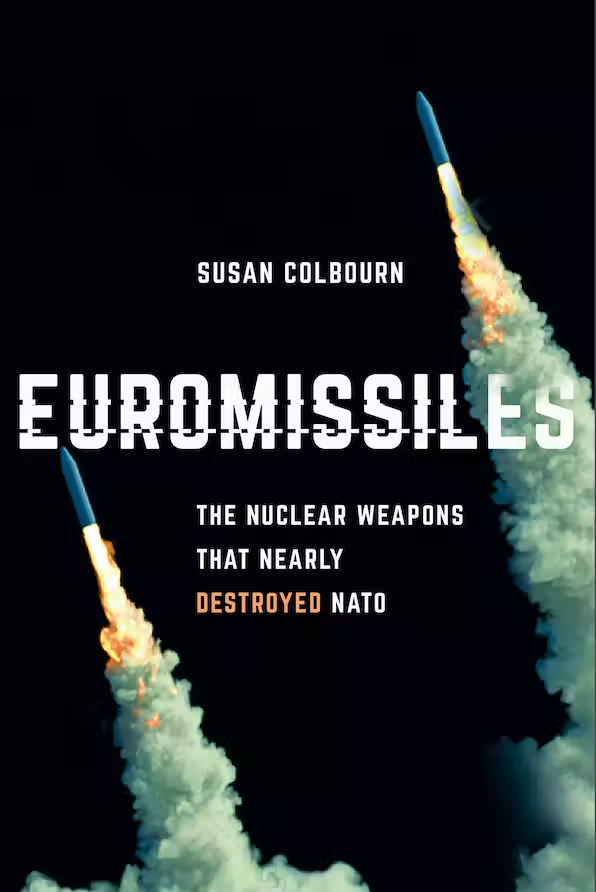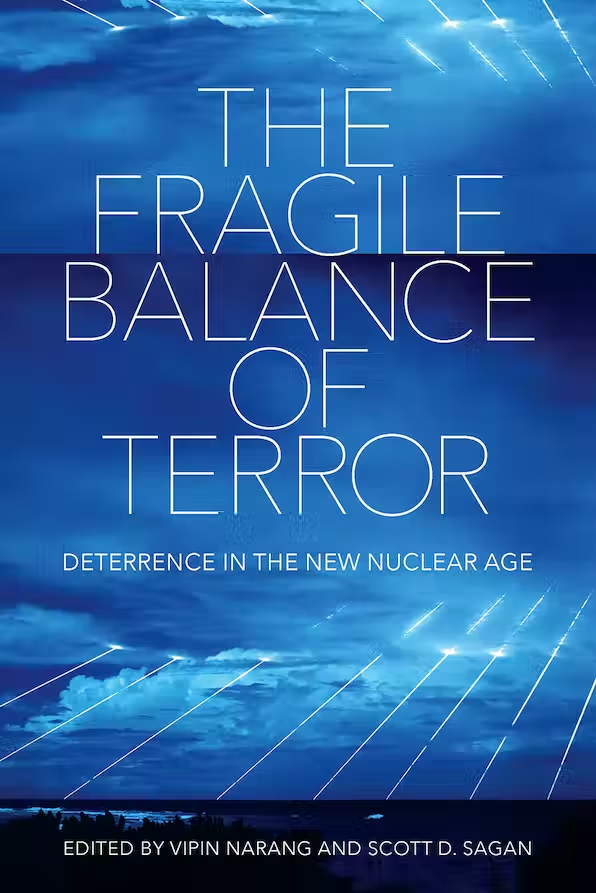“For half a century, ACA has been providing the world … with advocacy, analysis, and awareness on some of the most critical topics of international peace and security, including on how to achieve our common, shared goal of a world free of nuclear weapons.”
April 2023 Books of Note
April 2023
 Euromissiles: The Nuclear Weapons That Nearly Destroyed NATO
Euromissiles: The Nuclear Weapons That Nearly Destroyed NATO
By Susan Colbourn
2022
Susan Colbourn’s book explores the importance of the intermediate-range Euromissiles to the transatlantic alliance at the height of the Cold War. Overall, the book asserts that the dilemma plaguing Western allies then was that the Euromissiles—the Russian SS-20 “Saber” ballistic missile, the U.S. Pershing ballistic missile, and the U.S. Gryphon cruise missile—exposed the fault lines and uneasy compromises that had been present since NATO’s creation. These fault lines centered on how to ensure the credible defense of European allies and how to assuage the concern, felt particularly in West Germany, that missile parity between the Soviet Union and the United States would erode the U.S. ability to extend its deterrent to Europe. After all, the assumption was that U.S. nuclear superiority balanced the Warsaw Pact’s superior conventional forces.
Colbourn argues that this sense of insecurity was heightened by the introduction of the SS-20 in 1976 and the rejection by the anti-nuclear movement of the U.S. neutron bomb. By focusing on alliance dynamics, the book delves into strategy, diplomacy, social movements, and arms control aspects of the Euromissiles crisis. She particularly takes note of the impact of the anti-nuclear movement and the unique personality of Soviet leader Mikhail Gorbachev. More importantly, Colbourn highlights how the ruptures in the alliance security consensus posed by the question of the Euromissiles did not go away after the entry into force of the 1987 Intermediate-Range Nuclear Forces Treaty and continue to be relevant to this day.—GABRIELA IVELIZ ROSA HERNÁNDEZ
 The Fragile Balance of Terror: Deterrence in the New Nuclear Age
The Fragile Balance of Terror: Deterrence in the New Nuclear Age
Edited by Vipin Narang and Scott D. Sagan
January 2023
This book is a collection of articles on challenges to nuclear policy and strategy in the emerging new nuclear age. Questioning the theoretical foundations of classical “nuclear balance” and “nuclear stability” in the face of contemporary issues, the book examines why deterrence is bound to be more precarious in the future.
The first series of articles in the book analyze characteristics that differentiate the nuclear landscape in the 21st century from the Cold War period. Multipolarity in nuclear competition makes nuclear interactions more complex. Nondemocratic forms of governance and the leadership of personalist dictators in new states with nuclear aspirations mean predictions cannot be made based on the model of rational deterrence. In addition, changes in information and intelligence sharing make it more difficult to deescalate crises. In the second half of the book, experts scrutinize the ways in which persisting technological and structural challenges shift for nuclear states, in terms of planning for reliability and survivability and for the implementation of command and control over nuclear forces. Lastly, the concept of “nuclear learning” is brought into question. The editors conclude by offering a series of novel solutions for crisis management, operational arms control, nonproliferation, and counterproliferation to mitigate the threats and challenges discussed in the book.—CHRIS ROSTAMPOUR
